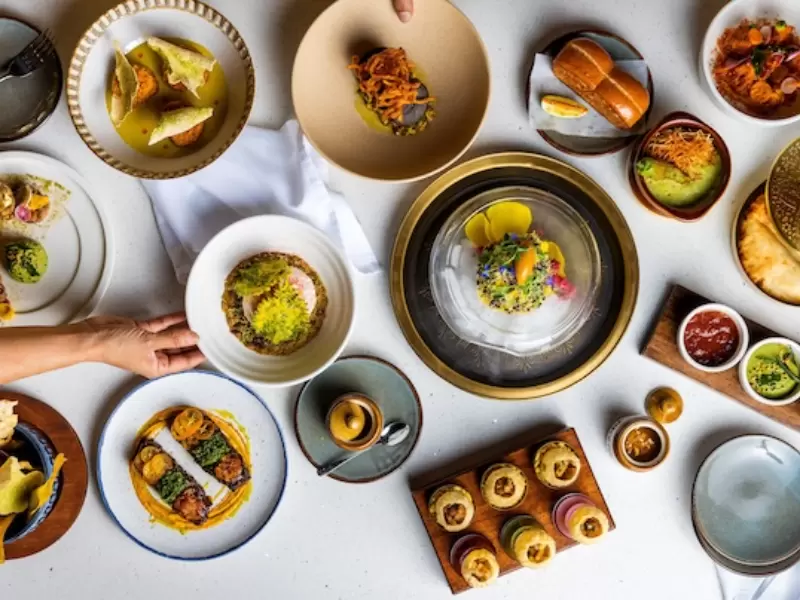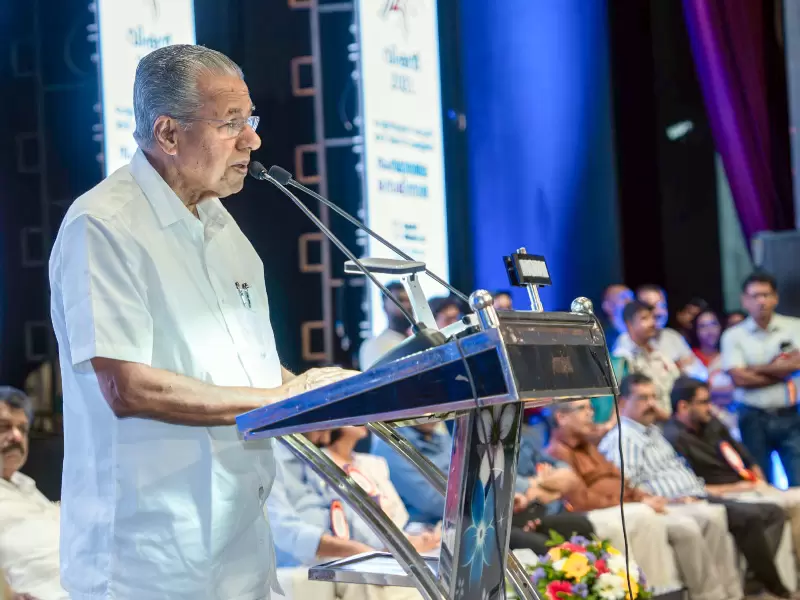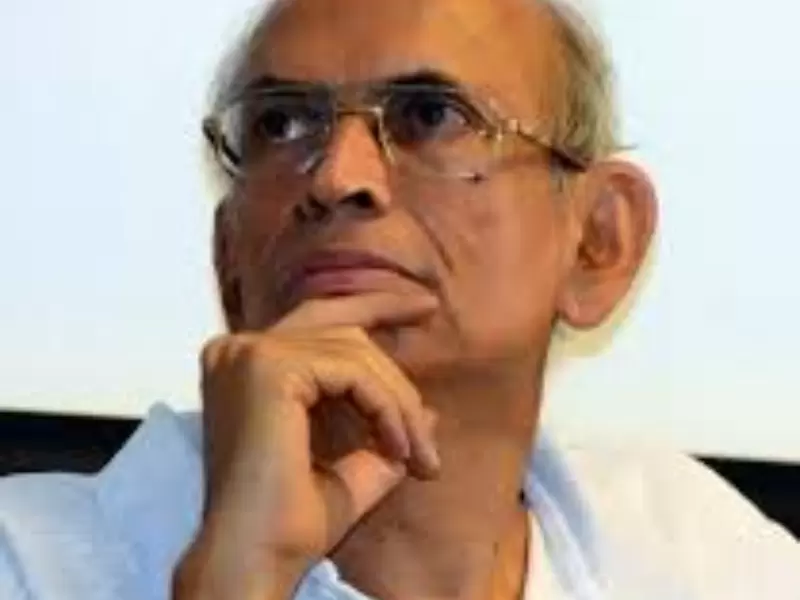A Divine Feast: Navratri and Dussehra Specials Redefining Indian Dining in USA
Check out these popular Indian eateries in America for a taste of home this festive season!
 A Navratri special spread. / Feringhee Modern Indian Cuisine
A Navratri special spread. / Feringhee Modern Indian Cuisine
The nine nights of Navratri and the culminating celebration of Dussehra have always been a highlight of the Indian calendar. In the United States, however, these festivals are no longer confined to home kitchens, they have become a showcase for culinary innovation in contemporary Indian restaurants. Chefs across the country are moving beyond the obligatory potato curry to offer thoughtful, gourmet interpretations of fasting traditions and grand festive feasts.
The trend for 2025 sees invention focusing on three key areas—elevating the traditional vrat (fasting) menu, marrying traditional flavors with modern techniques, and crafting an immersive dining experience.
The Gourmet Revolution of the Navratri Thali
The most interesting creativity is found in the Navratri Vrat Thali, the plate designed for those observing the fast, which traditionally bans onions, garlic, and common grains. American Indian chefs are transforming this restrictive diet into a luxurious tasting menu:
Feringhee - Modern Indian Cuisine, Chandler, Arizona: Well-loved for its sophisticated approach, Feringhee upgrades the simple vrat meal into a Navratri Special Gourmet Thali. The menu moves past the basics with dishes like a creamy Chironji Dal, a distinctive Himachali recipe using slow-cooked almond seeds, and a delicious Sweet Potato Chaat dressed with tangy tamarind and sweet yogurt, proving that sattvik food can be both authentic and high-end.
Hira Sweets, Various Locations: Recognizing the need for variety and accessibility, chains like Hira Sweets offer an extensive menu for the fasting consumer. Their invention is evident in their Falahari Gulab Jamun, a fasting-friendly version of the classic milk solid dessert, and crispy Vrat Ka Paneer Pakoda made with Rajgira flour, ensuring that even a quick snack can adhere to tradition without sacrificing flavor.
Modern Fusion and Experiential Dining
On the weekends during the festival, several eateries are hosting full-fledged events, catering not just to fasters but to families seeking a grand, celebratory ambiance that ends with Dussehra.
Celebration by Rupa Vira, Ashburn, Virginia: This modern Indian eatery turns Sundays into an experience with its Navratri Special Brunch Buffet. The innovation here is in the sheer variety and execution, featuring inventive dishes like a Vrat Special Dosa (made with fasting-approved flour) and light and delightful Makhana Chaat.
GupShup NYC: Inspired by the vibrant street food culture of Bombay, GupShup brings a fun, creative spin. While they are known for their modern, global take on Indian flavors, during the festival, one can expect creative small plates to inspired by the season, with a nod to regional specialties and vrat ingredients.
Roots Indian Bistro, Los Angeles: Located in LA's bustling Melrose Ave, Roots is known for its high-quality, organic, and sustainable approach to Indian cuisine. While well-loved for its contemporary classics, their festive menu features sattvik ingredients used in inventive, health-conscious ways, such as heirloom grain bowls and vegetable preparations that cater to the LA diner's preference for fresh, bold flavors.
The Rise of Bengali-Inspired Menus
While Navratri focuses on the nine nights of fasting and prayer, the final days, which overlap with Durga Puja, inspire special Bengali menus. Although US-based Durga Puja celebrations are highly localized, restaurants in major metro areas often dedicate a portion of their final week’s menu to classic Bengali dishes—often designated as no onion, no garlic to respect the bhog (offering) tradition—providing a taste of Kolkata for the Indian American community.
By taking the dietary constraints of a religious fast and transforming them into a canvas for culinary innovation, Indian restaurants in America are curating a sophisticated, accessible, and deeply authentic cultural narrative for a new generation of guests. They make sure that even thousands of miles from home, the spirit of Navratri and the celebration of Dussehra are as rich and delightful as ever.
ADVERTISEMENT
ADVERTISEMENT
E Paper
Video




 Pallavi Mehra
Pallavi Mehra





.jpg)






Comments
Start the conversation
Become a member of New India Abroad to start commenting.
Sign Up Now
Already have an account? Login